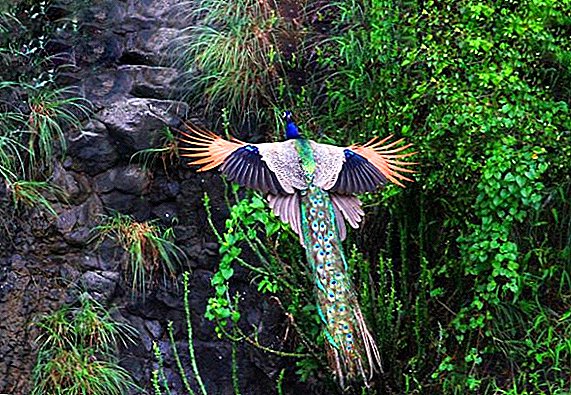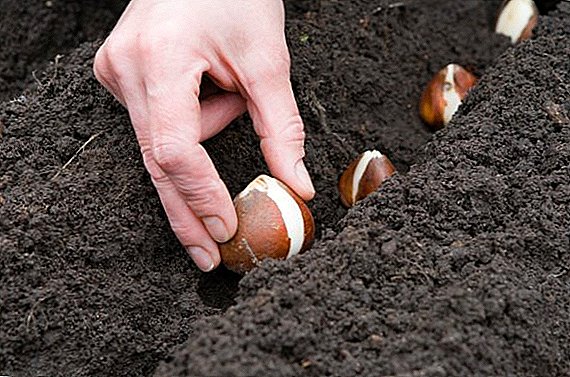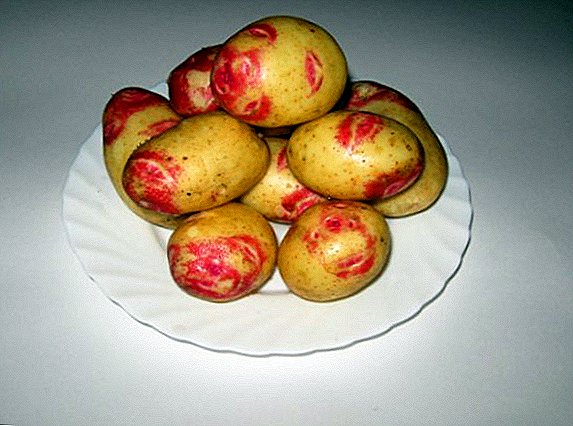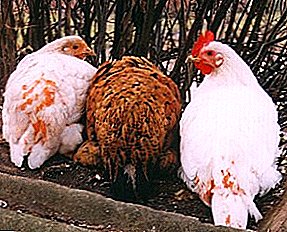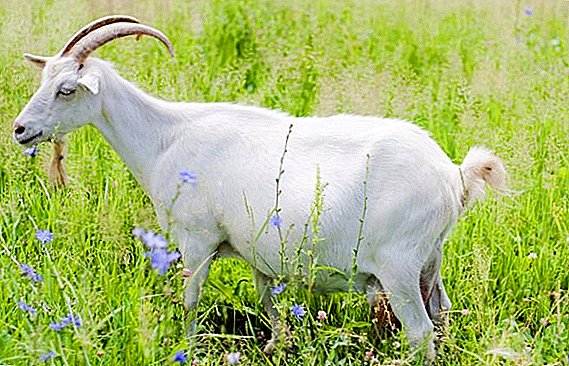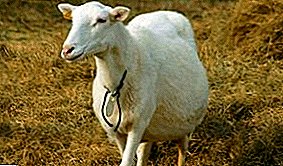 Many breeders keep goats not only for the purpose of obtaining milk, but also for breeding, therefore, mating of the female and male for the appearance of goats is carried out. To preserve the health of the female and to ensure the emergence of viable offspring, you need to know how to check the pregnancy of the animal, be able to properly deliver and give the necessary care to the goat and newborn babies. About all this - further in the article.
Many breeders keep goats not only for the purpose of obtaining milk, but also for breeding, therefore, mating of the female and male for the appearance of goats is carried out. To preserve the health of the female and to ensure the emergence of viable offspring, you need to know how to check the pregnancy of the animal, be able to properly deliver and give the necessary care to the goat and newborn babies. About all this - further in the article.
Signs of a goat's pregnancy
Pregnancy in goats is also called dullness. Inexperienced farmers may find it difficult to determine the dullness of a female after mating. Characteristic signs in the form of an enlarged abdomen appear in an animal only at a later date.
Did you know? According to the results of archaeological excavations, the first goats were domesticated more than 10,000 years ago in the Middle East.But there are several signs by which it is possible to determine the onset of pregnancy without referring to laboratory diagnostic methods. They vary depending on the duration of pregnancy, but they are based on a change in the appearance and behavior of the animal.
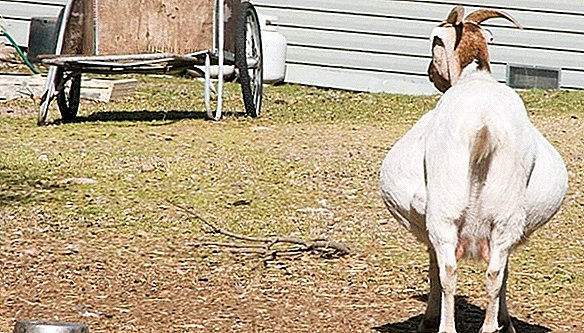
In the early stages
It is very difficult to independently determine a goat's pregnancy during the first 2 months, since the animal still does not have any external signs of pregnancy, therefore laboratory methods are used primarily for early diagnosis of pregnancy.
The following signs may indicate a possible dullness of a female:
- calm behavior after mating;
- increased milk yield;
- swelling of the vulva;
- squeezing the animal to straighten the spine;
- lack of sexual activity 3 weeks after the last mating.
Mid term
After the gestation period has exceeded 3 months, changes in the appearance of the goat occur. Even an inexperienced breeder can notice them if they regularly inspect the goat.
Important! In order not to harm the female and offspring, only a veterinarian should perform palpation.
The main signs of mid-term pregnancy are:
- slight increase in the size of the belly;
- enlarged uterus;
- the growing fetus is palpated through the walls of the abdomen during palpation;
- if you gently squeeze the walls of the belly under the spine, then under them solid and mobile formations are felt;
- uterine arteries located in the goat's genital tract increase in size and begin to throb.
On late terms
In the last months of pregnancy, kids grow up in the womb most actively. The female seeks to gain strength before giving birth, therefore, not only her appearance, but also her behavior changes. 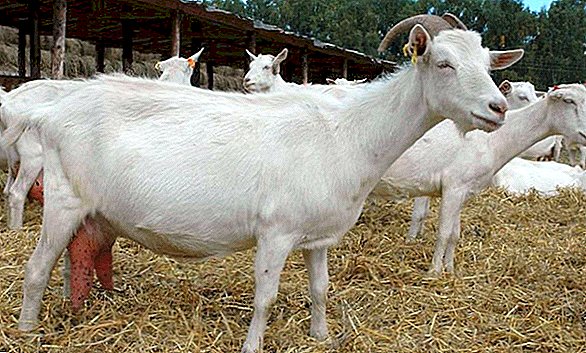 The main signs of pregnancy of an animal in the later periods include:
The main signs of pregnancy of an animal in the later periods include:
- the belly becomes rounded, sags down;
- the female often goes to rest;
- increase in appetite - the female is trying to replenish her strength and prevent depletion of the body;
- swelling of the external genital organs and udder;
- thick mucus is secreted from the genital slit, and colostrum from the teats on the udder;
- relaxation of the ligamentous apparatus of the pelvis, ligaments become loose;
- a slight increase in body temperature on the 5th month of pregnancy and its decrease before childbirth.
How to determine pregnancy in a goat at home
A pregnant goat needs rest before childbirth so that it can reproduce healthy offspring and feed it with its own milk. Timely determination of pregnancy allows you to calculate the date when you need to translate the goat in a dry state, that is, stop milking it.
We recommend that you find out what goat fat is good for.
The presence of pregnancy shows some signs that are the same for animals of any age. If the female is a pervorotkoy, then in the period of 3-4 months she begins active formation of the udder. Next, we consider the main ways of how to determine the pregnancy of the animal.
Milk
One of the popular methods for determining the pregnancy of a goat in the early stages is to check its milk. It is believed that after fertilization the milk of the animal becomes bitter, but it is not. 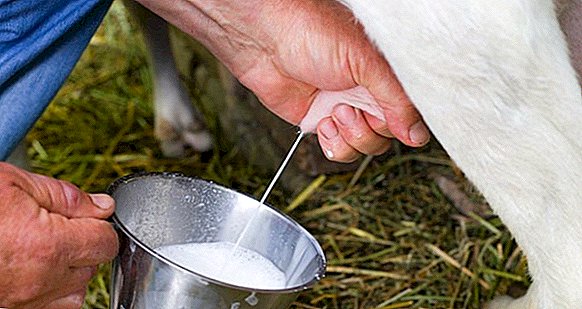 The taste of the product depends only on what kind of food goat receives, and is not related to pregnancy. Milk does not change its color and smell during the sapiness of the female, but according to it you can try to determine the presence of pregnancy.
The taste of the product depends only on what kind of food goat receives, and is not related to pregnancy. Milk does not change its color and smell during the sapiness of the female, but according to it you can try to determine the presence of pregnancy.
You will also be interested to know how much milk a goat gives per day.
To do this, perform the following actions:
- Pour clean and cool water into a glass beaker.
- Drip 2-3 drops of goat milk on the surface of the water in the glass.
- If the drops of milk do not lose their shape and sink to the bottom of the glass, then the fertilization was successful, and the female is pregnant.
- If milk is completely dissolved in water and colors it in a light color, then the goat is not pregnant.
This method of checking pregnancy is based on the fact that the milk of an animal after fertilization becomes more dense and thick. It can even be used by novice breeders, but is very inaccurate, so when using it, it is recommended to pay attention to other signs that indicate the presence of pregnancy. 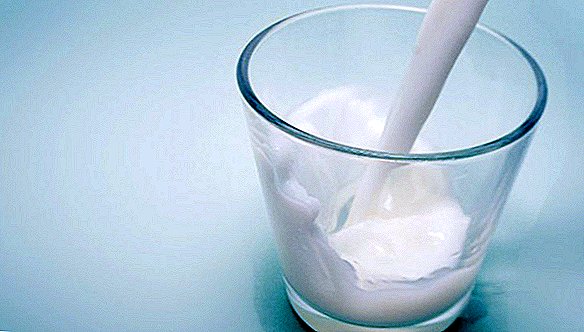
Over the stomach
The most reliable sign of the onset of pregnancy is a gradual increase in the goat's abdomen. But to see these changes in the early stages is impossible, so this method can only be used in the later stages of the dullness.
Did you know? When frightened or overexcited, some goats may "faint." This phenomenon is due to congenital myotonia, in which there is a temporary paralysis of the muscles of the animal.
With the development of pregnancy, the future baby actively grows in the mother's womb, therefore, these external signs appear:
- the female's belly begins to grow in size;
- in the second half of the pregnancy, the belly comes apart;
- the left and right sides of the belly look asymmetrically - the right side becomes more convex;
- in later periods, the female's abdomen sags down and becomes rounded.
For lack of hunting
This method makes it possible to establish an early pregnancy of an animal with a high probability. Hunting in goats occurs in the spring and autumn, during this period they are reduced to the male for fertilization. 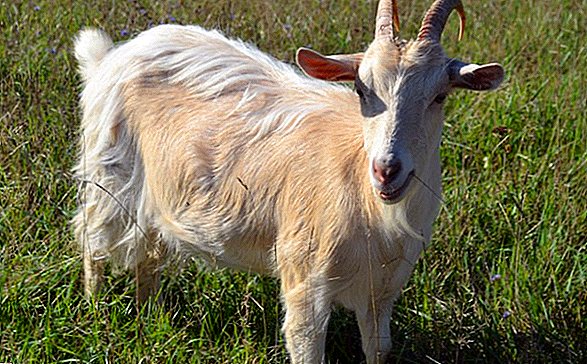 The main signs of hunting include:
The main signs of hunting include:
- redness and increase in the size of the genitals;
- the female becomes very mobile, often wags its tail;
- restless behavior when there is a male nearby;
- thick discharge from the genitals.
Learn how to identify a goat hunt.
In order to determine pregnancy in this way, you need:
- re-take the goat to the male 3 weeks after mating;
- in the absence of signs of hunting in the female, it can be assumed that she is pregnant;
- if the animal shows signs of hunting, then the pregnancy has not come.
Rectal way
This method of determining pregnancy is based on external signs that appear on the genitals of the animal. You can see them only by the two-month period, if you regularly inspect the goat.
Important! Best of all, the uterine artery is felt when the animal is in the third month of pregnancy.
To establish the dullness of an animal using this method, you need:
- Raise up the tail and inspect the genitals.
- Pay attention to the skin folds under the tail - during pregnancy, they are smoothed.
- Inspect the skin of the perineum - in the period of dullness, it becomes smooth and even.
- Check for swelling around the perineum - this swelling increases in size as the duration of pregnancy increases.
- Introduce the index finger into the rectum of the animal and lightly press the posterior artery to supply the uterus with blood. During pregnancy, this artery becomes elastic and slightly vibrates from a large blood flow.
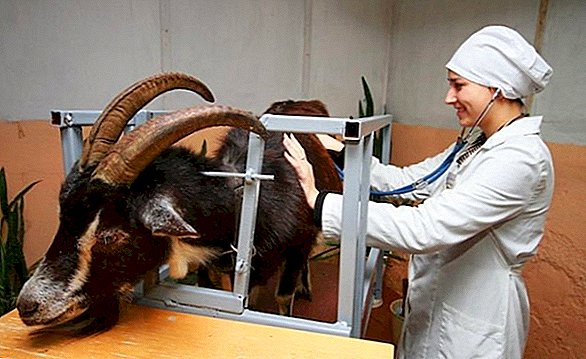
Duration of gestation
Goat pregnancy lasts 147-150 days. The date of birth is determined by counting 150 days from the time of the last mating. If the female bears several cubs, then childbirth can occur a little earlier - after 140-144 days after mating. In case of singleton pregnancy, the female can sometimes replant offspring, in this case, the pregnancy lasts 154-160 days. If childbirth does not occur in due time, it is recommended to consult a veterinarian.
Read more about how to choose a milking machine for goats.
In a young goat, 2-3 babies can be born during a single pregnancy, while older ones often give birth to 4-5 young goats. At the same time, it is almost impossible to independently determine the number of individuals that the female bears.
How are birth
Most often, the goat independently reproduces offspring, and the process of childbirth lasts no more than 2 hours. The intensity of labor activity of a goat depends on its age, general well-being and location of the embryo. If the female gives birth for the first time, then childbirth is slower, and repeated lambing can last only 40 minutes. With the normal development of pregnancy and well-being, the animal does not need the help of a veterinarian, but if the cub is located incorrectly, it is better to invite a specialist to the birth.
Video: goat birth
Training
In order for the goat to give birth successfully, it is necessary to carry out a number of preparatory activities that relate to the arrangement of the premises and changes in the care of pregnant animals.
Did you know? Wool from Angora and Kashmir goat breeds are used to make fabrics that are particularly soft.
Before childbirth, it is necessary to make changes in the diet of the goat and adjust the rules of care:
- gradually stop milking the animal for 5-6 weeks before the date of lambing, so that she gained strength to raise offspring;
- to reduce the amount of milk, reduce the amount of succulent feed in 2 times;
- after completion of the start-up process, it is necessary to restore the initial ration of feeding and give the goat 1-1.5 kg of concentrated special feed to provide it with energy for the normal development of actively growing embryos;
- 10-14 days before delivery, reduce the amount of concentrated feed by 2 times, and 3-4 days before lambing to minimize the amount of juicy food;
- do not give the animal poor-quality or mold-damaged food, raw roots;
- To eliminate the risk of miscarriage, do not allow injury to a pregnant goat, an abrupt change of climate or air temperature.
It is equally important to carry out proper preparation of premises for pregnant females and newborn offspring. 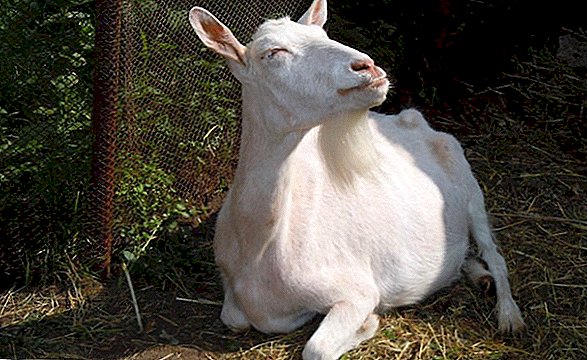 For this you need:
For this you need:
- prepare for the goat an individual pen of about 2 m;
- remove manure and dirt from the pen, lay a layer of clean straw;
- process the room with a solution of lime a few days before the lambing;
- to provide indoor air temperature of about + 10 ... + 15 ° С, eliminate drafts;
- install a feeder and drinker in the pen, fill them with food and warm water in front of the lambing.
Lambing process
1.5-2 hours before giving birth, the pregnant female begins to get anxious, and then the process of giving birth begins. During lambing, you must follow the instructions clearly and monitor the condition of the animal.
Read also about how the goat lamb passes.
A step-by-step algorithm for action during the delivery of a goat is described below:
- Wait until the bubble of liquid comes out of the animal's vagina. After that, the front legs of the goat and the head lying on them should appear.
- When the cub is completely out of the maternal organism, it is necessary to clear its respiratory tract from mucus.
- If the female bore several cubs, then they leave her body at short intervals.
- Put the kids to the head of the female, so that she licked them, and then wipe with a baby piece of clean cloth.
- Tie the umbilical cord to the babies with a thick thread dipped in iodine solution. Dressing is recommended at a distance of 2-3 cm from the abdomen.
- Trim the rest of the umbilical cord at a distance of 1 cm from the ligation. Place the cut cut iodine.
- Observe newborn goats for 2-3 hours in order to provide them with first aid, if necessary.
- Wait for separation of the afterbirth, he usually leaves within a few hours after the appearance of offspring. Then remove the dirty litter from the pen and replace it with fresh and dry straw.
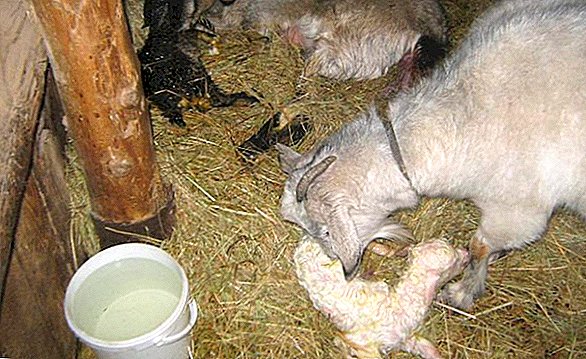
Possible complications
Usually the process of giving birth to a goat proceeds normally, and the animal does not require the assistance of a veterinarian. But sometimes during lambing complications arise that can threaten the health or life of the female and her offspring.
Important! Before performing any actions with the female during childbirth, you need to wash your hands and sanitize them.
The list of possible complications and the rules for overcoming them are listed below:
- The goat's head does not come out. The reason for this complication may be too large baby size, as a result of which he can not get out of the vagina. To help the female push the kid, you need to lubricate the area of her vagina with boric Vaseline.
- A newborn goat does not move or breathe. To help the baby, you need to slightly open his mouth and blow into it. If this procedure does not give the desired effect, then the goatling is laid back and several times bend his legs to stimulate breathing.
- The fetus is not positioned correctly, and at the time of birth, the back of the body first leaves. In this case, only a veterinarian can help the animal, so you need to immediately call a specialist.
- The goat is born in the amniotic sac. So that the cub does not suffocate, you need to cut the bubble and help the animal to get out.
- The afterbirth does not depart. If after birth more than 6 hours have passed, but there is no afterbirth, then the goat should be given a warm decoction of flax seeds or warmed wine. If the placenta did not appear after 10-12 hours, you should immediately contact the veterinarian.
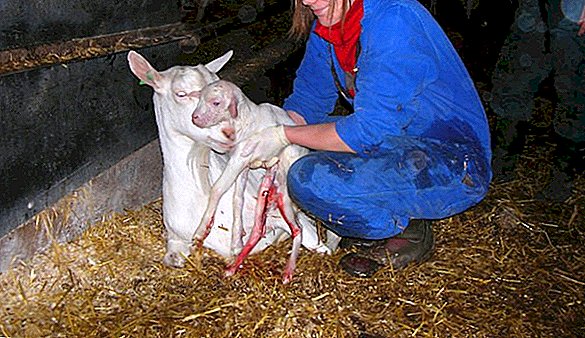
Actions after childbirth
After childbirth is successfully completed, it is necessary to provide proper care to the female and newborn offspring.
In relation to giving birth to a goat, you must perform the following actions:
- process the thighs of the goat with a 4% solution of baking soda and allow the animal to rest;
- Feed the animal warm water with added sugar and give hay. Then give the female a drink every 3-4 hours for the first 2-3 days after lambing;
- after lambing, decant a small amount of colostrum - it is not suitable for feeding the kids;
- the first 4 days the female is fed only easily digestible foods, the number of feedings per day is up to 4 times, the portions should be small;
- in the second week after giving birth, the female is given hay, boiled root crops, and succulent feeds in order to stimulate the production of milk for feeding the offspring;
- during the first week after birth, the goat is milked 5 times a day, every 3-4 hours. Before each milking, udder massage is required;
- in the second week after the lambing, the female is milked 4 times a day.
Did you know? Goat can see at 340°, without turning heads, thanks to a pupil that has the shape of a horizontal rectangle.
In order for newborn babies to grow up healthy, they also need to provide appropriate care. 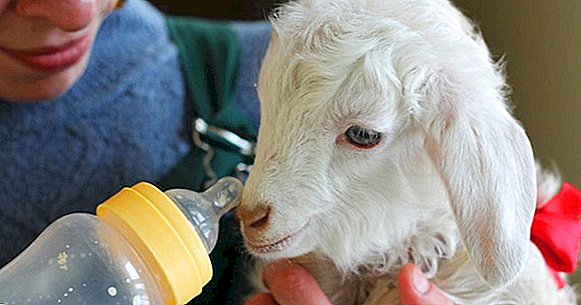
Its main features are listed below:
- let the kids go to the female about 30-40 minutes after the lamb so that they can eat;
- in the case of keeping goats for milk production, after feeding the cubs, they must be kept separately from the mother. Feed the kids need through the nipple expressed maternal colostrum and milk 4 times a day;
- with a separate content of offspring, they are placed in wooden or plastic cages with a grated bottom; cleaning is necessary twice a day;
- when growing goats in small farms, kids are left with their mother, who feeds them herself up to the age of 3 months;
- Newborn babies are recommended to be vaccinated according to the schedule. The first vaccination is carried out at the age of 4-7 days after delivery.
False pregnancy
Sometimes a goat has a so-called false pregnancy. Independently distinguishing it from a real pregnancy is very difficult, so the farmer until the last moment can be sure that the offspring will soon appear.
Important! If a goat has a very fast belly, no appetite and breathing is difficult, then this is a bad sign. The animal must be immediately shown to the veterinarian.
Pseudo-pregnancy may result from:
- early embryo death;
- hormonal failure;
- absence of a fertilized egg.
 In the body of a goat the following processes occur:
In the body of a goat the following processes occur:- all hormones are produced that are characteristic of a pregnant female;
- the goat becomes calm;
- the udder of the animal increases;
- the uterus is filled with a watery fluid, as a result of which the belly begins to grow;
- when the moment of childbirth comes, only water flows out of the body of the female, but no offspring.
False pregnancy is not a disease, and the milking of the goat will soon resume. This condition usually does not pose a danger to the female, and it is impossible to determine her at home - for this you need to contact the laboratory and make an ultrasound for the animal.
Learn how to cure sheep and goats for smallpox.
Goat pregnancy is a joyful event for the farmer, which allows you to increase the milk yield and provides an increase in the number of animals. Using the characteristics listed in this article, you can determine the animal's dryness, and following the rules for caring for a goat during pregnancy and after it will allow you to get healthy offspring.


